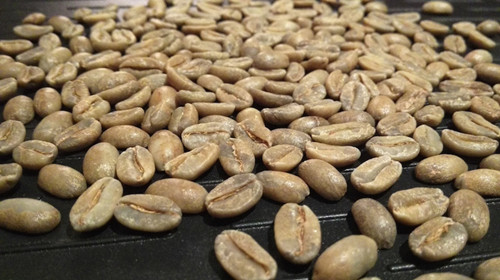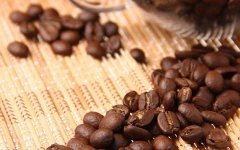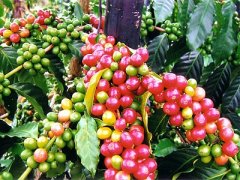Costa Rican Coffee-Costa Rican Coffee-Costa Rican Coffee
It is high time to introduce this Costa Rica, a friend I haven't seen for a long time, but this year's new debut is a new feeling. The more I want to give a detailed description of this bean friend who has come from afar, the more I suffer from not having enough information to write about it. Since even President Xi has begun to visit Colombia, I quickly keep up with the current situation and present this excellent bean from China and the United States.

Costa Rica, the first economic power in China and the United States, is known as' Central America Switzerland'. Of course, in addition to its unique beautiful scenery, it is also famous for its' extremely high happiness index', as well as its coffee. For enthusiasts, the first phrase that comes to mind when it comes to Costa Rican coffee is' equilibrium 'and' purity'. That's right-balance is the greatest character of Colombian coffee, while purity is its greatest virtue. Of course, most commercial-grade coffee beans feel almost mediocre and can only be described as' coffee flavor', but the boutique Kodak is a perfect balance between tropical fruit flavors and bitter coffee, making the taste purer, pure to completely transparent-like a crystal cup filled with bananas, pineapples, cherries, cherries, strawberries, peaches and grapefruit in the blink of an eye These colorful fruits turn into amber liquid again-this is the real image of this Helsar de Zarcero!
Why is it so pure? Why are so many fruity flavors so vivid? Let's go to the origin to find out.
This bean comes from the city of Naranjo in the western valley of Colombia. It is one of the many small boutique raw bean processing plants in Colombia. In addition to the use of advanced machine operation of exquisite washing processing, the unique geographical environment is the key factor to achieve its excellent quality. The pleasant climate of the region makes tourists linger all the year round, the dry and wet season is obviously more conducive to coffee production and harvest, and the volcanic ash soil injects more nutrients into the growth of beans. The altitude of 1650-1800 meters above sea level provides enough temperature difference between day and night to make the beans fuller-the first-class' very hard beans' are produced here.
Such beans naturally perform well when baking. After the Jasper beads are put into the boiler, they begin to change from Jasper to Topaz. The beautiful color is accompanied by a beautiful aroma, which is both eye-pleasing and heart-pleasing. The baking degree of high is enough to give full play to the sweet and sour notes of its tropical fruit combination, while the moderately low mellowness is gentle and rich. Even if people drink coffee for the first time, they will not have any burden, because that very small amount of bitterness is also hidden behind the sweet and sour taste, which is almost hard to detect. Even after it is cold, the mellow degree is still hidden in the deepest part. Push syrup-like sweetness to the tip of the tongue-what a sweet and sour early summer! What a fresh and pure Costa Rica in early summer!
Important Notice :
前街咖啡 FrontStreet Coffee has moved to new addredd:
FrontStreet Coffee Address: 315,Donghua East Road,GuangZhou
Tel:020 38364473
- Prev

Introduction to boutique coffee beans-Arabica coffee beans what are Arabica coffee beans? Ah
What is Arabica coffee beans? Arabica coffee beans are also one of the coffee beans, but account for 70% and 80% of coffee bean production. It can be seen that Arabica coffee beans are the main source of raw materials for coffee. So what is Arakabi? What kind of nutrition does it have? What's the use? How does it make coffee? What if I eat expired Arabica coffee beans?
- Next

Introduction of boutique coffee beans-- African Kenyan coffee beans Kenyan coffee characteristics Kenyan coffee
African Kenyan coffee Kenyan coffee is mostly grown at an altitude of 15002100 meters and is harvested twice a year. Its main feature is a distinct fruit aroma, the common fruit aroma is citrus. Kenyan coffee has a multi-layered taste and juice acidity, perfect grapefruit and wine flavor, moderate mellow, is the favorite of many people in the coffee industry. Ken
Related
- Detailed explanation of Jadeite planting Land in Panamanian Jadeite Manor introduction to the grading system of Jadeite competitive bidding, Red bid, Green bid and Rose Summer
- Story of Coffee planting in Brenka region of Costa Rica Stonehenge Manor anaerobic heavy honey treatment of flavor mouth
- What's on the barrel of Blue Mountain Coffee beans?
- Can American coffee also pull flowers? How to use hot American style to pull out a good-looking pattern?
- Can you make a cold extract with coffee beans? What is the right proportion for cold-extracted coffee formula?
- Indonesian PWN Gold Mandrine Coffee Origin Features Flavor How to Chong? Mandolin coffee is American.
- A brief introduction to the flavor characteristics of Brazilian yellow bourbon coffee beans
- What is the effect of different water quality on the flavor of cold-extracted coffee? What kind of water is best for brewing coffee?
- Why do you think of Rose Summer whenever you mention Panamanian coffee?
- Introduction to the characteristics of authentic blue mountain coffee bean producing areas? What is the CIB Coffee Authority in Jamaica?

